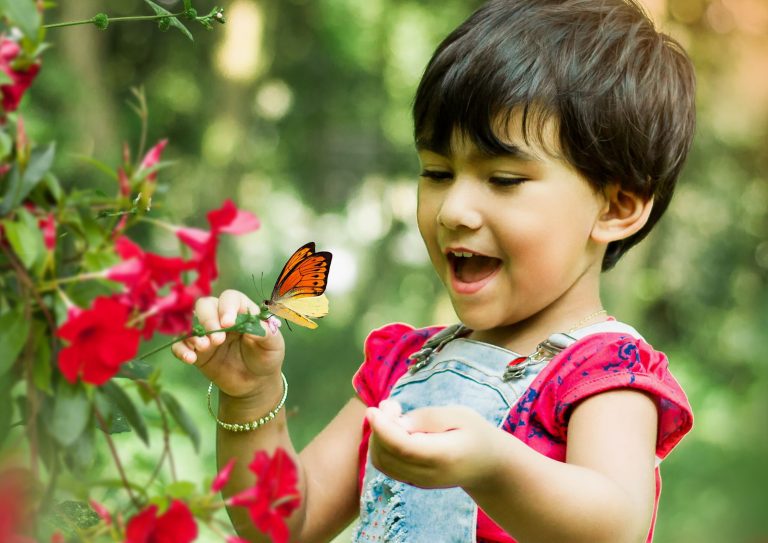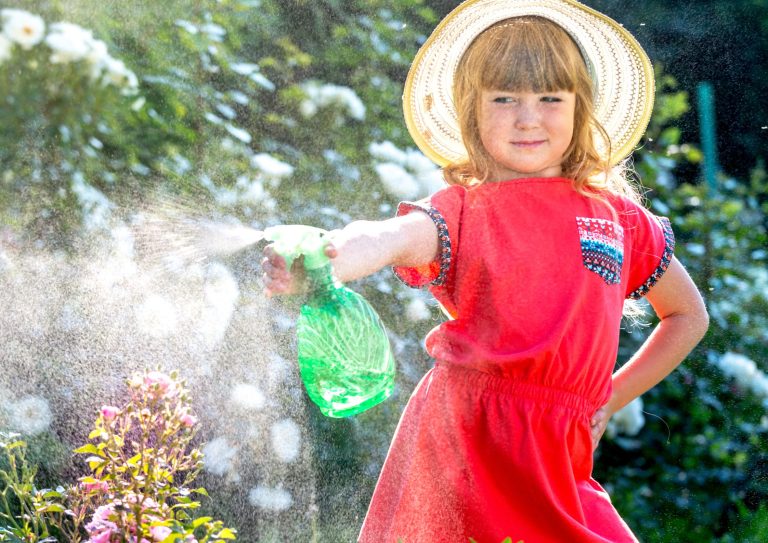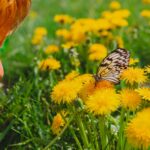When you imagine a sensory butterfly garden, you probably picture colorful butterflies perching and flying around on beautifully scented flowers. Indeed, butterflies add beauty and life to a garden and more people are starting to create sensory gardens to attract butterflies.
A sensory butterfly garden combines elements that captivate the senses while also attracting a colorful collection of butterflies to create a garden with immaculate visuals and the warming presence of wildlife.
To build a sensory butterfly garden, you need to have a basic understanding of the life cycle and feeding habits of butterflies. You also need to know the elements you have to infuse into the garden to achieve a sensory touch.
This article will discuss the important things you should know and will give you tips the can assist you in successfully building and maintaining a beautiful sensory butterfly garden.

Pick The Right Location For The Garden
It’s important that you choose the right spot that is perfect for the plants to grow and also easily accessible to butterflies. When choosing a location for your children’s butterfly garden, you may want to consider the following factors:
Sunlight: Choose a location that gets a minimum of 6 hours of sunlight daily. You should ensure that the spot you choose gets direct sunlight and that the flow of sunlight is not partly covered by a shade or cast a shadow by any nearby structure.
Butterflies are cold-blooded so a warm spot is vital in attracting them and keeping them warm throughout the day.
Protection From Strong Wind: You need a spot that is sheltered from strong winds since butterflies are paper-weighted creatures. So it is essential for you to find an area that is safe from any harsh winds and where butterflies can easily feed and lay their eggs.
A Water Source: While butterflies don’t require much water to survive, they require pudding stations where they can drink from damp soil and moist dirt. The pudding stations also serve as protection for the butterflies from the wind.
Trees and shrubs: Trees and shrubs can provide butterflies with protection from wind as well as from predators. The shadow they cast over the garden is a small price to pay for the other benefits they provide.
Plant Butterfly-Friendly Plants
Butterflies are practically attracted to almost all kinds of flowers. However, some flowers aside from being attractive to butterflies, also add great color and beauty to the garden.
These are some of the nectar-filled and beautiful flowers you can use in creating a sensory butterfly garden:
Perennials: Perennials are traditional flowers and brightly colored plants whose nectar is easy to access by butterflies and birds. Examples of top butterfly perennials you can choose from are Milkweed, Asters, Coneflowers, Liatris, and Hyssop.
Flowering Shrubs: Aside from being a perfect nourishing flower for butterflies, flowering shrubs also add beauty to the landscape. Some of the flowering shrubs you can plant are Sweetspire, Viburnum, and Elderberry.
Nectar-Rich Flowers: A butterfly garden is not complete without nectar-rich flowers that will attract and sustain a number of butterflies. For nectar-rich butterflies, you can plant pentas, cosmos zinnias, lantana, and petunias.
Plant The Plants According To Their Heights
By arranging the plants in the order of the shortest to the tallest, it will make it easier for the butterflies to reach their food. You should place larger bushes of shrubs at the back with the shorter flowers coming first.
Plant The Flowers In Large Groups
When planting, try to group the flowers together in large masses instead of spreading them out. A cluster of flowers will be much easily spotted by butterflies. It will also make their feeding and breeding easier.
You should plant the flowers that will bloom at the same time together. For instance, flowers blooming in autumn should be planted together while those blooming in the late spring should be planted at another section of the garden.


Add Other Butterfly-Friendly Elements To Your Sensory Butterfly Garden
You can add some extra elements to your garden so the butterflies will get more attracted. This will help to attract them and also sustain their presence in the garden. Some of the butterfly-friendly additions you can make include:
Flat Rocks: Butterflies enjoy soaking up the din while perching on a warm rock especially during the early hours. Rocks will provide a natural habitat for the butterflies while also adding a natural touch to your garden.
Butterfly Box: You can set up a butterfly box if you want to provide additional shelter for the butterflies. It’s similar to a bird house but with slatted openings for keeping out predators. The butterfly box will provide shelter for the butterflies against harsh weather or at night.
Tray Of Fruit Scraps: You can use this to provide extra food for the butterflies. While they can’t get all the nutrients they require from the nectar plants, a tray of cut-up fruits can provide an extra source of nutrients and a way to keep the butterflies in your garden.
Butterfly Feeder For Steady Supply of Nectar: Furthermore, if you want to ensure that the butterflies have a steady supply of nectar even when the flowers are not in bloom, you can use a butterfly feeder to provide them with nectar.
Butterfly feeders and nectars can be purchased at a garden store. You can also make your own nectar by mixing one part sugar with one part water, then boiling it and waiting for it to cool down before putting it in the butterfly feeder.
Avoid Pesticides That Harm Butterflies
In addition, in cleaning your garden and in an attempt to get rid of pests, ensure you make use of pesticides that aren’t harmful to butterflies and other beneficial pollinators. You should consider using non-pesticide methods of controlling pests such as using water to blast away small insects and handpicking harmless insects from plants.
If there’s a situation such as a pest outbreak and you have to use a pesticide, you should ask for butterfly-friendly pesticides at a garden shop. They should also be used carefully to avoid destroying your plants and harming the butterflies.
Add Sensory Elements To The Sensory Butterfly Garden
Your sensory butterfly garden is not complete without adding sensory elements. You should add colorful plants that will add visual aesthetics to make your butterfly gardening for kids experience more fun! Also, flowers with wonderful scents would be a great addition because they are useful to the mind and body.
Moreso, remember to include a touch of decoration such as adding a pond to create a soothing sight and sound of water. This will increase the aesthetic appeal and provide some calming effect to your sensory butterfly garden.


Final Words
Gardens are a beautiful addition to any home as they provide a space to take in the beauty of nature and spend some private time. That is exactly why butterfly gardens are becoming more popular these days.
If you want to build your own sensory butterfly garden, you should always ensure you have the right space, plant the right flowers, and create the right condition that will attract and sustain the butterflies for a long time.
Related Posts
-
8 Sensory Butterfly Garden Hacks: A Cheat Sheet for Parents
A sensory butterfly garden is a nice place for rest and exploration, especially for children.…
-
Why Your Sensory Butterfly Garden Is Missing the Mark (And How You Can Fix It)
Keeping your sensory butterfly garden appealing and engaging with the basic sensations as it should,…
-
How to Create a Children's Sensory Garden
Gardens are, by their very nature, a wonderfully sensory experience. Even the simplest…



